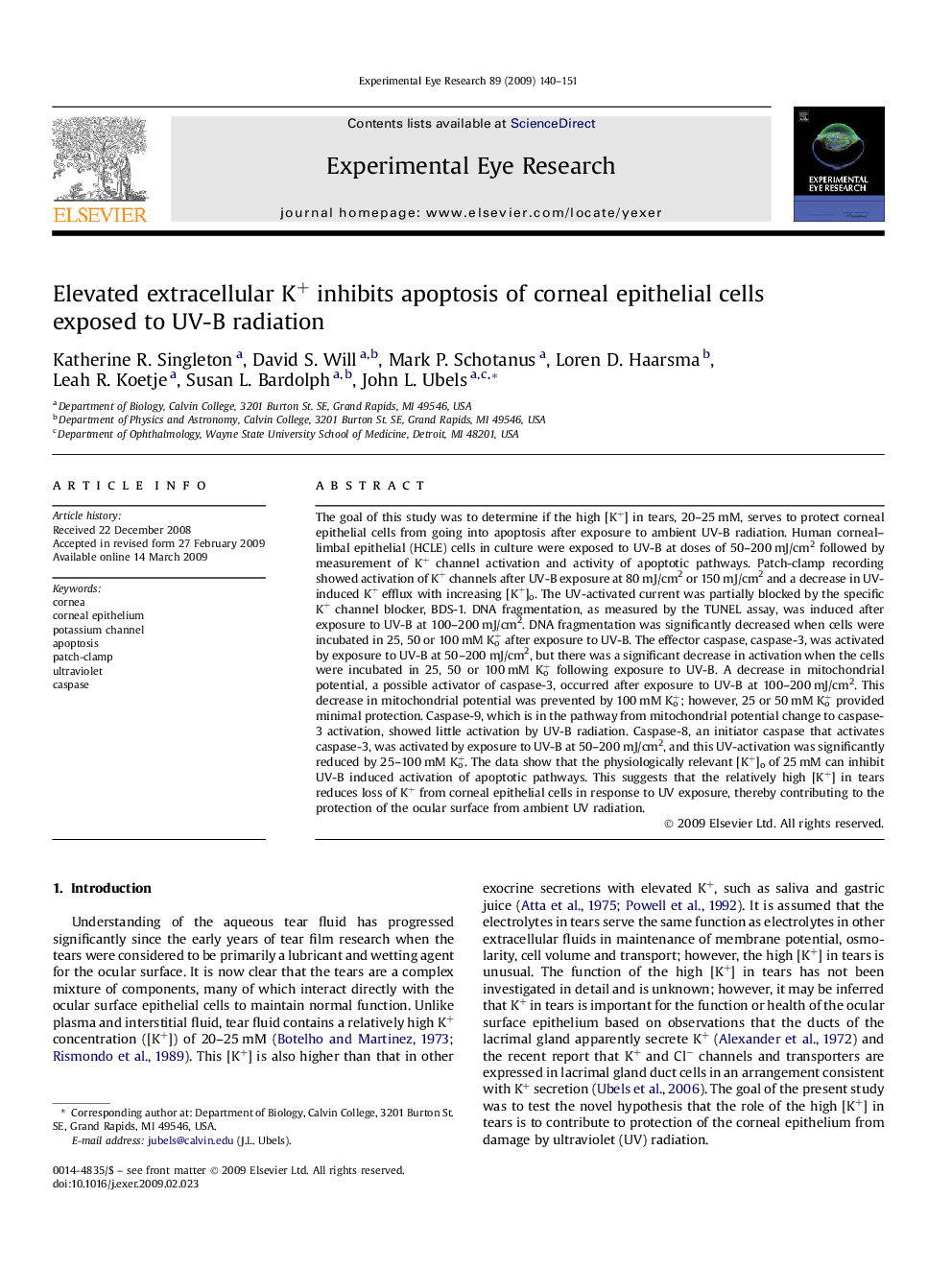| Article ID | Journal | Published Year | Pages | File Type |
|---|---|---|---|---|
| 4011920 | Experimental Eye Research | 2009 | 12 Pages |
The goal of this study was to determine if the high [K+] in tears, 20–25 mM, serves to protect corneal epithelial cells from going into apoptosis after exposure to ambient UV-B radiation. Human corneal–limbal epithelial (HCLE) cells in culture were exposed to UV-B at doses of 50–200 mJ/cm2 followed by measurement of K+ channel activation and activity of apoptotic pathways. Patch-clamp recording showed activation of K+ channels after UV-B exposure at 80 mJ/cm2 or 150 mJ/cm2 and a decrease in UV-induced K+ efflux with increasing [K+]o. The UV-activated current was partially blocked by the specific K+ channel blocker, BDS-1. DNA fragmentation, as measured by the TUNEL assay, was induced after exposure to UV-B at 100–200 mJ/cm2. DNA fragmentation was significantly decreased when cells were incubated in 25, 50 or 100 mM Ko+ after exposure to UV-B. The effector caspase, caspase-3, was activated by exposure to UV-B at 50–200 mJ/cm2, but there was a significant decrease in activation when the cells were incubated in 25, 50 or 100 mM Ko+ following exposure to UV-B. A decrease in mitochondrial potential, a possible activator of caspase-3, occurred after exposure to UV-B at 100–200 mJ/cm2. This decrease in mitochondrial potential was prevented by 100 mM Ko+; however, 25 or 50 mM Ko+ provided minimal protection. Caspase-9, which is in the pathway from mitochondrial potential change to caspase-3 activation, showed little activation by UV-B radiation. Caspase-8, an initiator caspase that activates caspase-3, was activated by exposure to UV-B at 50–200 mJ/cm2, and this UV-activation was significantly reduced by 25–100 mM Ko+. The data show that the physiologically relevant [K+]o of 25 mM can inhibit UV-B induced activation of apoptotic pathways. This suggests that the relatively high [K+] in tears reduces loss of K+ from corneal epithelial cells in response to UV exposure, thereby contributing to the protection of the ocular surface from ambient UV radiation.
